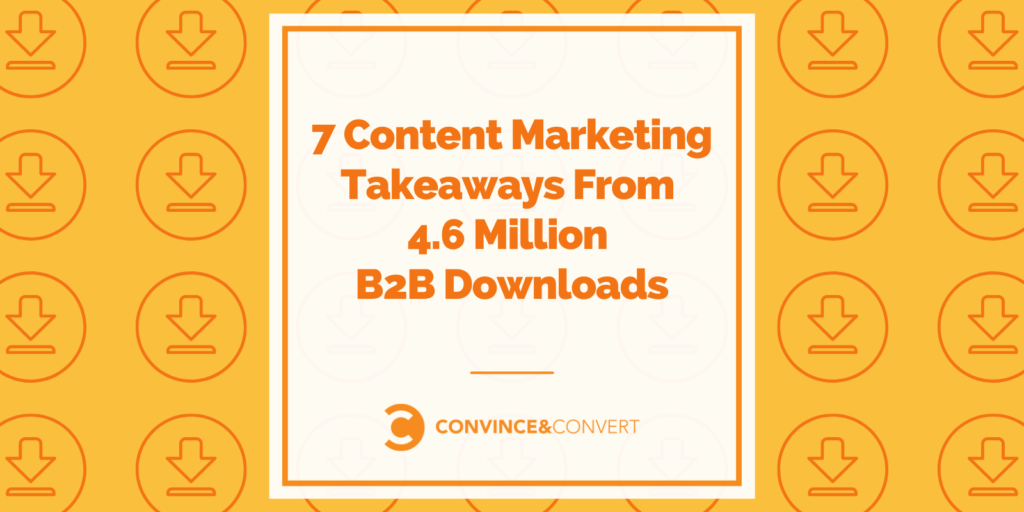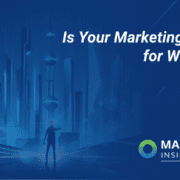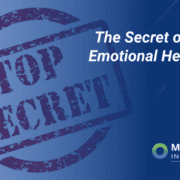7 Content Marketing Takeaways From 4.6 Million B2B Downloads

“A generation which ignores history has no past – and no future.” – Robert A. Heinlein
Marketers love to talk about data. We love to talk about findings. But what good are such things if we’re not ready and willing to both learn from and act on them?
Each year, my company, NetLine, publishes the most complete study on B2B buyer behaviors through first-party content consumption data. The result is a complete view into the current trends in the market, how needs and appetites are evolving, and what marketers can do to adapt.
Here are some of the biggest takeaways and most impactful insights from NetLine’s 2022 State of B2B Content Consumption and Demand Report for Marketers.
B2B Content Demand Increased 9% YOY
Anecdotally, we’ve known that content demand and consumption have been rising for years. But how often is that story quantified?
In each of our six annual reports, we’ve only seen growth YOY and would be stunned if it ever dipped. However, thanks in large part to the pandemic, the previous 24 months saw B2B audiences request a whopping 33% more content combined compared to 2019.
With this tremendous upswing in registration volume, there can only be one conclusion: We need to produce more content.
Audiences Require More and More Content
I can already hear the dismay this conclusion will cause, though I promise it’s not so bad.
“Wait—you want us to produce more content than we’re already creating?”
The short answer is, well…yes. Granted we’re not talking about asking your content team to go overboard on what they’re already working on. In most cases, the content you’re producing or planning to create is going to be plenty for what your audience needs.
As Jay Baer and many others have discussed for years now, what audiences really need is more options of how to consume your content. That eBook you spent months on? Turn it into a Webinar; highlight different sections in a series of blog posts; ask your design team to transform it into an infographic; chunk it out into a few Twitter threads, etc. However you choose to format your work, our data is proof that atomization is key to satisfying the demands of your audience.
Speaking of formats, they certainly do matter when it comes to consumption.
Books Accounted for Nearly Half of All Registrations
B2B users love eBooks. They are hands down the most popular format across our platform, representing 43.3% of all registrations. To underscore just how dominant eBooks were, if we combined the registration volume between the next eight most popular content formats, it would still represent a smaller number of registrations than eBooks. Wild.
The larger trend here is that shorter, simpler, and more casual content is the real winner here. Guides were the second most popular content format and consumption of Cheat Sheets increased 56.5% YOY—good enough to place them in the top three.
White Papers, once the king of the content castle, were the third most requested format in 2020 and even saw a nearly 8% increase in request volume this past year. Despite this uptick in interest, they still dropped to fifth in the Top 10 and were bested by eBooks by 484%—further underscoring the growing interest in more casual content.
But don’t go thinking that White Papers are losing their fastball, dear friend. Oh, no, for that is certainly not the case. In fact, thanks to NetLine’s buyer-level Intent Discovery data, we’ve found that White Papers have a very special place in the buyer’s journey. More on that in a moment.
Content Consumption is Directly Correlated with Investment
As we analyzed all of the data generated on our platform from the previous 12 months, we began to investigate the 72K first-party buyer-level intent insights we captured over the same period. What these insights revealed was quite remarkable and (if we’re being honest) led to the most impactful study NetLine’s ever published.
For starters, we found that content consumption relates directly with investment within the next 12 months. The more your audience consumes, the more likely they are to be closing in on a purchase decision. Again, this is something we’ve long theorized at an aggregate level, but now we have tangible evidence.
We learned that nearly one-third (~31%) of B2B buyers expect to make purchases within the next 12 months, with 15.2% expecting to make additional investments within the next six months. To put this in perspective using an example from our analysis of Artificial Intelligence investment trends, close to 6% of the buyers in this market are preparing to make a move in the next quarter—that means there’s potentially $3.72 billion just waiting to be spent.
This is all well and good but what specific signals can you be on the lookout for with your own content to help you
Long-form Content Registrations Indicate Greater Purchase Intent
Remember when we said that White Papers have a very special place in the buyer’s journey? This is why.

According to our buyer-level intent data, long-form content formats like White Papers, Research Reports, and On-Demand Webinars are more closely associated with immediate buying decisions. Despite the fact that eBooks dominate overall registration volume, they are clearly a top-of-funnel format and are therefore less likely to be associated with an immediate buying decision.
The content that’s been assigned to the More Likely column, however, is much weightier and dense. White Papers are, by definition, technical documents that discuss subjects in great detail. While eBooks, Cheat Sheets, and Tips and Tricks Guides all had record years on the NetLine platform, their quick-hitting, “in-and-out” natures are perfect for buyers just getting introduced to a given subject matter or market.
Perhaps the most longform content of all is the Webinar. Webinars are geared for those looking to answer questions like how and why—which are typically asked toward the end of a buying cycle. Considering that professionals registering for webinars are 29% more likely to make a purchase decision within 6 months, it’s clear that those who register for (and then attend) these sessions should be hot on your Sales team’s radar.
Professionals registering for webinars are 29% more likely to make a purchase decision within 6 months.
Click To Tweet
Hybrid Events Are Here to Stay
Speaking of the value of Webinars, this medium and its kin continue to show their worth. In 2020, Webinars were thrust into the spotlight across every industry, resulting in a 103% increase in uploads to our platform. While content marketers clearly had a need for this medium during the crux of the pandemic, users continue to find them worthwhile today.2021 saw a 63% increase in total Webinar registrations.
On-Demand Webinars increased by 45%, generating 41% more registrations than Live Webinars. Virtual Events were the big winner of the group, as the format saw registrations increase 139% YOY—an indication that both virtual and hybrid events have a booming market. Yes, pandemic paranoia plays a part in this market growth, but the real reason hybrid is here to stay? Return on investment.
Events will forever remain a significant place in the Marketing landscape. But when we’re looking at the return on time, quality of data and pipeline generation, Webinars and other virtual sessions hold the upper hand.
Content Consumption is Up…and So is the Time to Consume It
While we shared that content consumption has increased 33% over the past 24 months, we’ve yet to mention that secondary content demand (aka any content requests that occur beyond the first request) accelerated by 19% YOY. Said a different way, users are not only consuming more content, but the same users are also coming back for more. This is a great thing! But here’s the other side of that coin: It’s taking them longer to consume this content.
This time from registration to consumption is something that NetLine calls the Consumption Gap. For the third year in a row, the Consumption Gap widened; 2019 and 2020 saw increases of just over an hour, growing from 2018’s low of 27.1 hours. However, 2021 saw a 12% increase, as the Consumption Gap grew from 29.7 hours to 33.3 hours — a 3.6-hour increase.
How often is the Consumption Gap taken into account by marketers and sales professionals? You can probably answer this question for yourself. I’m sure you’ve gotten a call from a representative after just registering for an eBook. No, thanks, pal.
Hypothetically, consumption can increase infinitely. B2B professionals, on the other hand, have a finite amount of time to dedicate to consumption. Therefore, as registration volume grows, the more likely it is that the consumption gap will widen. To combat this, marketers need to be on top of their nurture programs and be sure to give users enough breathing room to actually consume the content they’ve asked for.
Learn More About 2022 B2B Content Marketing Trends
There are still dozens of insights left to be discovered within NetLine’s 2022 Content Consumption Report. Ultimately, the report aims to aid your content marketing efforts and highlights the true behaviors of B2B users. Our hope is that by knowing these details, you’ll be able to better position your content in every facet and deliver more impactful results for you and your audience.
NetLine’s 2022 Content Consumption Report is now available for download. Best of luck in your content creation and strategy.
The post 7 Content Marketing Takeaways From 4.6 Million B2B Downloads appeared first on Content Marketing Consulting and Social Media Strategy.












